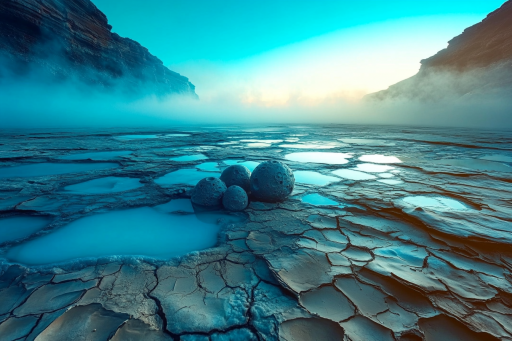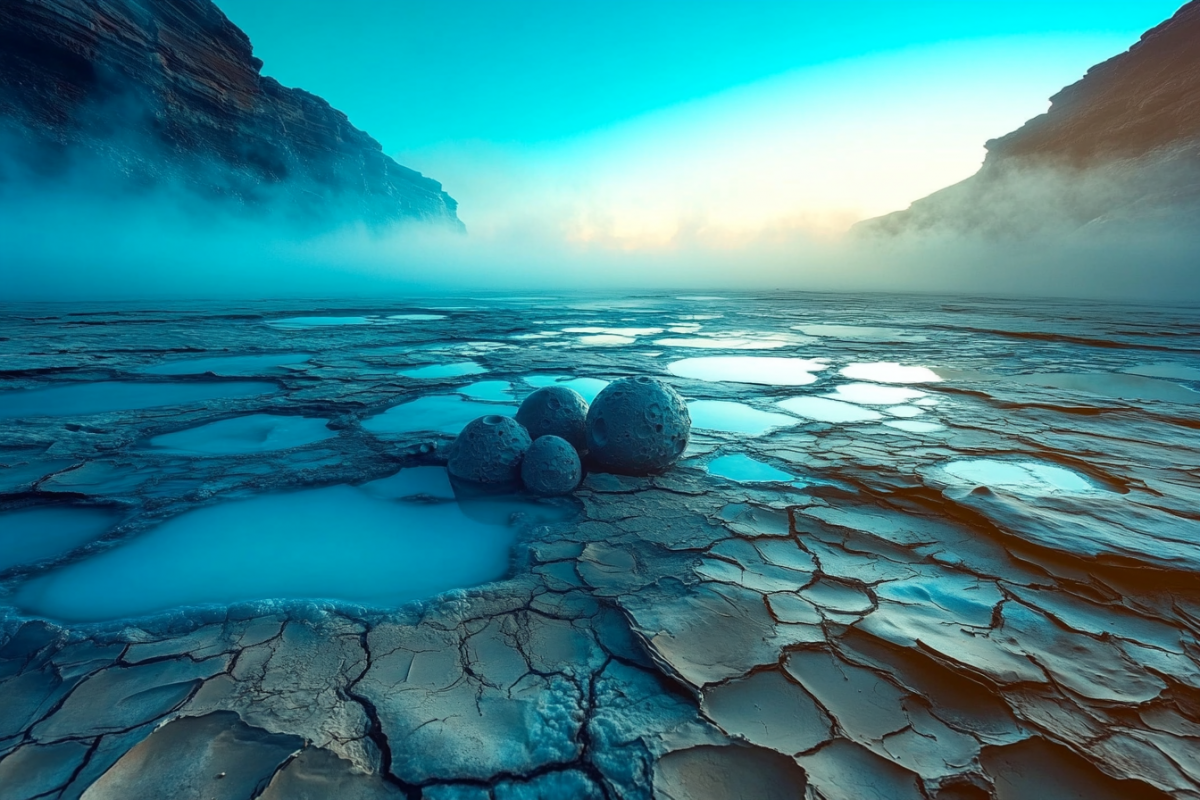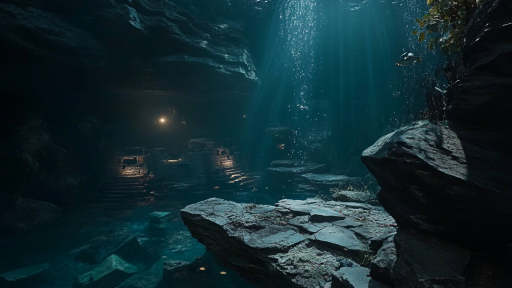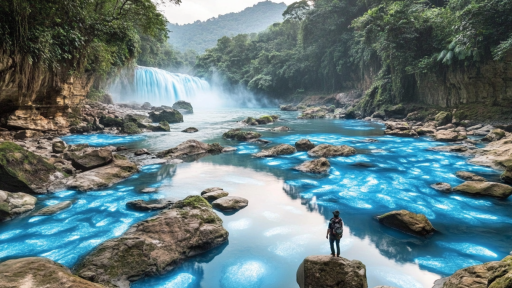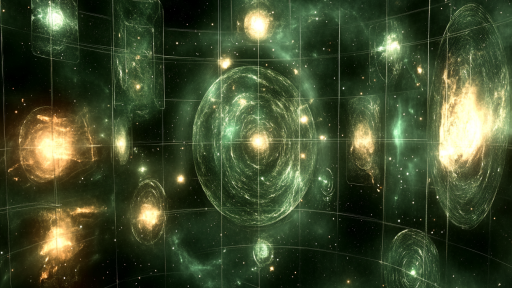
Space is vast, cold, and filled with worlds that seem both haunting and mysterious. Some of these distant places have conditions so extreme that they seem uninhabitable, yet they could hold the key to extraterrestrial life. From frozen moons with hidden oceans to rogue planets drifting in darkness, these locations challenge our understanding of what life can endure. Could something—or someone—be out there, waiting to be found?
Europa: The Icy Moon With a Hidden Ocean

Beneath Europa’s frozen crust lies a vast, global ocean, kept warm by powerful tidal forces. Scientists believe hydrothermal vents on its ocean floor could create the perfect conditions for alien microbial life, much like Earth’s deep-sea vents. Its icy surface is riddled with cracks, possibly allowing organic material to seep through from below. If life exists in our solar system beyond Earth, Europa might be the best place to find it.
Enceladus: The Moon That Sprays Water Into Space

Saturn’s moon Enceladus is an icy world that shoots massive plumes of water vapor into space. These geysers contain organic molecules, suggesting that a subsurface ocean could harbor alien life. The Cassini spacecraft flew through these plumes and detected complex compounds, hinting at the possibility of microbial ecosystems. If there are deep-sea vents in its hidden ocean, Enceladus could be teeming with unknown lifeforms.
Titan: A Moon With Lakes of Liquid Methane

Titan, Saturn’s largest moon, is the only place in the solar system with stable liquid lakes on its surface—but they’re filled with liquid methane instead of water. Despite the extreme cold, scientists believe that exotic, methane-based life could exist in these alien lakes. Titan’s thick, orange atmosphere is rich in organic chemicals, making it one of the most intriguing candidates for extraterrestrial life. If life can exist without water, it might be thriving on Titan.
Mars: The Red Planet’s Buried Secrets

Mars was once covered in rivers and lakes, and signs of ancient water still linger beneath its surface. Recent discoveries suggest that salty, underground reservoirs could still support microbial life today. Methane spikes in the Martian atmosphere remain unexplained—on Earth, methane is often linked to biological activity. With future missions set to drill beneath the surface, Mars could soon reveal its most haunting secret: life.
Proxima b: A Potentially Habitable Exoplanet Next Door

Orbiting the closest star to our Sun, Proxima b lies within its star’s habitable zone, where liquid water could exist. While its red dwarf star emits harsh radiation, a thick atmosphere or subsurface oceans could protect life. If extraterrestrial organisms exist here, they might have evolved in ways completely different from life on Earth. Its eerie proximity makes Proxima b one of the most tantalizing candidates for alien life.
Trappist-1 System: Seven Strange Earth-Like Worlds

The Trappist-1 star hosts a system of seven rocky exoplanets, three of which lie in the habitable zone. These planets are locked in a gravitational dance, with perpetual daylight on one side and eternal night on the other. If life exists there, it might have adapted to extreme conditions, surviving in twilight zones between light and darkness. This eerie solar system challenges everything we thought we knew about habitability.
Rogue Planets: Wandering Worlds in Eternal Darkness

Rogue planets are worlds that drift through the cosmos, unbound to any star, shrouded in endless night. Despite their isolation, some may have thick atmospheres trapping heat, creating hidden subsurface oceans. If life can survive without sunlight, rogue planets could be home to unknown alien ecosystems. These lost worlds remain some of the most haunting and mysterious places in space.
The Boötes Void: A Cosmic Desert With No Stars

The Boötes Void is an immense, empty region of space with almost no galaxies—an eerie cosmic desert that defies explanation. Some astronomers speculate that advanced civilizations could have intentionally cleared it, though natural causes remain the leading theory. The sheer emptiness of this void raises questions about the nature of the universe itself. If alien life exists beyond Earth, could it be hiding in the darkness?
Kepler-22b: A Super-Earth With an Unknown Surface

Kepler-22b sits in its star’s habitable zone, and its size suggests it could have a thick atmosphere or a vast ocean. Whether its surface is rocky, watery, or something entirely alien is still unknown. If it has the right conditions, it could host lifeforms unlike anything found on Earth. This distant world is one of the most promising targets in the search for extraterrestrial life.
Gliese 1214 b: The “Waterworld” Exoplanet

Gliese 1214 b is a strange planet covered entirely in water, with no solid landmasses. Its thick, steamy atmosphere could create a greenhouse effect, making its deep ocean warm enough for life. Some scientists speculate that alien organisms could thrive in its endless, sunless sea. If confirmed, this would be the first true “ocean planet” known to humanity.
Ceres: The Mysterious Dwarf Planet With Bright Spots

Ceres, the largest object in the asteroid belt, has puzzled scientists with its bright, reflective spots on the surface. These deposits, likely made of salt and ice, could be evidence of a hidden subsurface ocean. Recent studies suggest that liquid water may still exist beneath its crust, creating the conditions for microbial life. Could Ceres be home to alien organisms hiding beneath its icy shell?
Is the Universe More Alive Than We Think?

With every new discovery, the idea that Earth is the only place with life becomes harder to believe. Strange moons, dark planets, and unexplained cosmic anomalies suggest that life may exist in places we never imagined. Whether hiding beneath ice, drifting through space, or thriving in alien atmospheres, the search for extraterrestrial life is far from over. If life can take root in the most unexpected corners of the universe, where else might it be waiting to be found?

